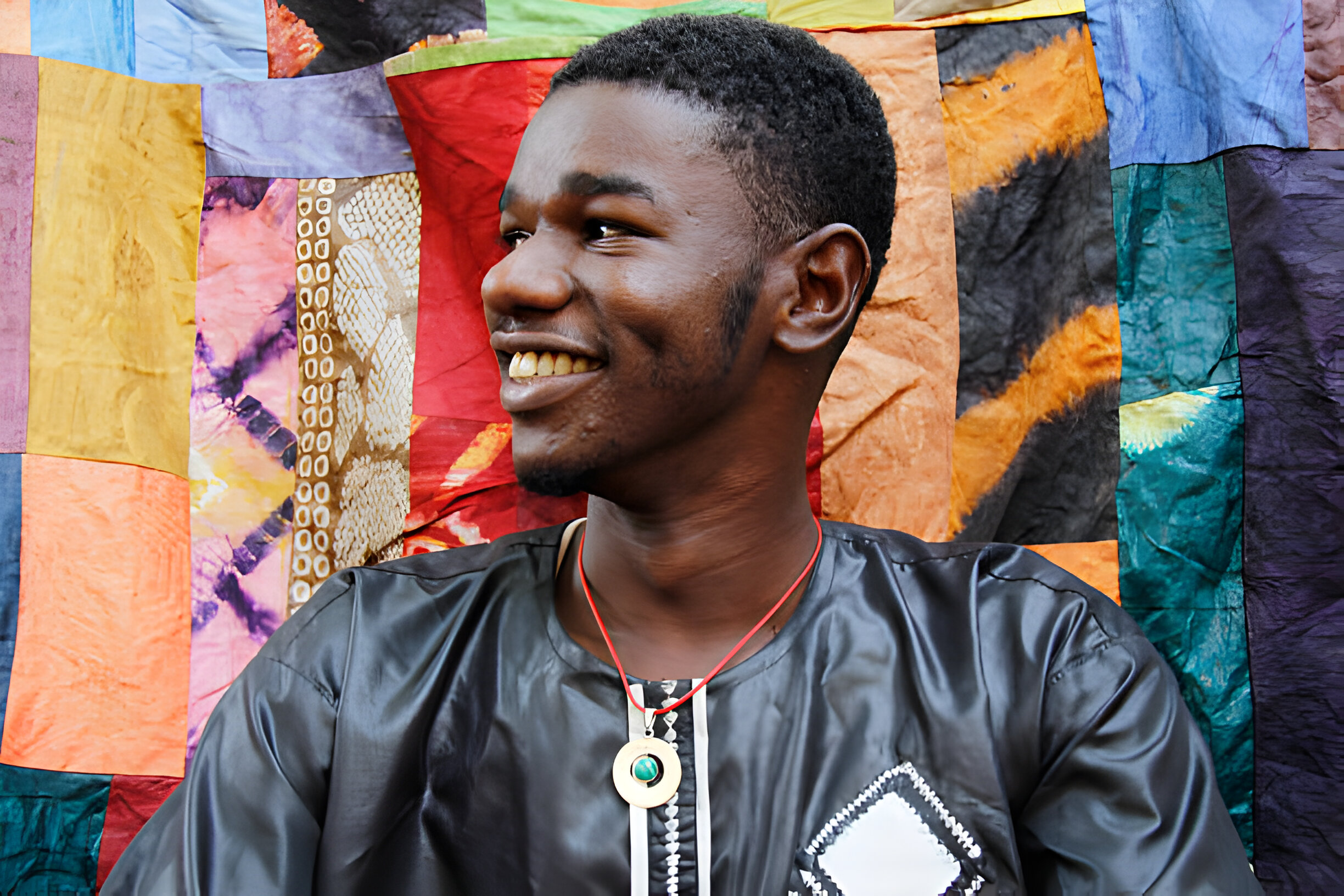Image Credit: GetyImage
In the quest to understand and appreciate the diverse spectrum of human beauty, the intrigue surrounding who holds the title of the blackest person in the world is more than just a matter of curiosity. It is a celebration of dark skin pigmentation that highlights the rich variation of skin tones spanning across different African regions—from Ethiopia to South Sudan. This discussion delves into more than the biological aspects of melanin; it touches upon the cultural, societal, and aesthetic interpretations and implications of having the darkest skin tone, challenging long-held beauty standards and showcasing the multidimensional beauty of African beauty.
The article will explore the concept of blackness and melanin, identifying not just the blackest man and woman in the world but also the significance of these distinctions in redefining societal beauty standards. Drawing from examples such as appearances in New York Fashion Week and the global recognition of African models, it will demonstrate how the celebration of the blackest person, man, or woman alive contributes to a broader understanding and acceptance of diverse beauty norms. Through this narrative, the aim is to illuminate the deep-seated beauty inherent in the spectrum of black skin tones, challenging conventional beauty ideals and promoting a more inclusive appreciation of all forms of human beauty.
The Concept of Blackness and Melanin
Melanin, a crucial pigment found in the skin, plays a significant role in determining skin color and protecting against various environmental challenges. Produced by cells called melanocytes, melanin comes in two primary forms: eumelanin, which contributes to darker skin tones, and pheomelanin, responsible for lighter shades. The balance and distribution of these melanins define an individual’s skin, hair, and eye color.
Eumelanin, predominantly found in individuals with dark skin, offers enhanced protection against ultraviolet (UV) radiation. This natural barrier helps in shielding the skin’s DNA from sun-induced damage, reducing the risk of skin cancer. Dark-skinned individuals typically have larger, more densely packed melanosomes, which are cellular structures that store melanin. These characteristics allow for greater UV protection but also pose unique skin care challenges.
Darker skin tones are less prone to sunburn yet more susceptible to hyperpigmentation and certain inflammatory skin conditions like eczema and psoriasis. Post-inflammatory hyperpigmentation, for instance, can result from skin injuries, where the skin responds by overproducing melanin, leading to dark spots or uneven skin tone. Managing these conditions effectively requires a careful balance of treatments that do not further disrupt the skin’s natural pigmentation.
Moreover, melanin-rich skin can experience variations in hydration levels, often leading to dryness. This necessitates a tailored approach to skincare, emphasizing hydration and the careful selection of products that do not irritate or exacerbate sensitivity.
Understanding the function and challenges associated with melanin not only informs better skincare practices but also enriches the appreciation for the complexity and beauty of dark skin tones. As research continues to uncover the various facets of melanin, it becomes clear that this pigment does much more than just determine skin color; it is integral to the body’s adaptation and protection against environmental factors.
Also Read: Why Do Guys Stare at Me but Never Smile? Unveiling the Mystery
Who is the Blackest Man in the World?
Viral Internet Phenomena
The identity of the world’s darkest man captured global attention when his image unexpectedly went viral.
Anonymous African Man
Described by many as having a complexion “as deep as a bar of dark chocolate,” this individual’s striking appearance has made him a subject of fascination and admiration. His deep brown skin tone is a testament to the genetic diversity and adaptability of humans, particularly those from African descent.
Public Reactions
The public’s reaction to the darkest man in the world has been overwhelmingly positive, with many using his image to challenge and redefine traditional beauty standards that often favor lighter skin tones. His presence in the public eye serves as a powerful reminder of the beauty that exists in darker skin pigmentation and encourages a broader acceptance and appreciation of this diversity. This shift is crucial in a world where beauty standards have historically been narrow and exclusionary.
Who is the Blackest Woman in the World?
Nyakim Gatwech
Born in a refugee camp in Ethiopia and raised in South Sudan, Gatwech’s journey to the United States was fraught with challenges, including the loss of two siblings. Despite these hardships, her strikingly dark skin tone and compelling story have made her a symbol of beauty and resilience.
Her Journey and Achievements
Gatwech’s modeling career began to gain traction during her junior year of high school after she decided to pursue modeling more seriously. Overcoming the societal pressures and beauty standards that favored lighter skin, she used her platform to advocate for diversity and self-love.
Impact on Beauty Standards
Through her public presence and social media, Gatwech challenges conventional beauty norms and promotes a broader, more inclusive definition of beauty. Her story of transformation from a bullied schoolgirl to a celebrated fashion icon continues to inspire young women globally. By advocating for self-love and embracing her natural beauty, Gatwech has not only redefined beauty standards but has also encouraged others to do the same. Her work extends beyond modeling, as she uses her platform to address and educate on issues of colorism and self-acceptance, making a lasting impact on the industry and those who follow her.
Redefining Societal Beauty Standards
Challenges Faced by Dark-Skinned Individuals
Historically, dark-skinned individuals have confronted significant biases across various social institutions. The prevalence of colorism means that those with darker skin are often subject to harsh stereotypes and discrimination, affecting everything from employment opportunities to interactions with law enforcement. Studies reveal that dark-skinned Black men are disproportionately incarcerated and face higher unemployment rates, while dark-skinned women are often labeled with negative traits and considered less attractive unless they conform to exceptionally high beauty standards.
The Role of Social Media
Social media plays a complex role in shaping beauty standards. While it has the potential to promote diversity, it often perpetuates unrealistic beauty ideals through the widespread use of filters and photo editing tools. These digital alterations create a distorted reality where young users feel pressured to achieve unattainable looks, impacting their self-esteem and mental health. However, social media also offers platforms for voices that challenge these norms, advocating for body acceptance and showcasing a broader spectrum of beauty that includes all skin tones, body types, and features.
Success Stories
Despite these challenges, there are inspiring success stories that highlight shifts toward more inclusive beauty standards. Influencers and celebrities with dark skin are beginning to gain recognition and use their platforms to advocate for change. For instance, actresses and models who have faced discrimination due to their skin tone are now celebrated for their work and influence. These individuals not only succeed in their careers but also help redefine societal beauty norms, proving that beauty is diverse and multifaceted. Their achievements are crucial in encouraging a more accepting and inclusive representation in media and society.
Conclusion
Throughout this exploration of the world’s blackest individuals and the broader significance of melanin-rich skin, it becomes evident that the true beauty of darkness transcends mere biological factors—it embodies resilience, diversity, and profound cultural narratives. By highlighting the stories of individuals like the unidentified African man and Nyakim Gatwech, this discussion not only showcases the extraordinary spectrum of human skin tones but also challenges and reshapes societal beauty standards. Emphasizing the importance of recognizing and celebrating dark skin allows for a deeper appreciation of humanity’s myriad expressions, moving us towards a more inclusive and accepting world.
The journey towards redefining beauty norms is far from complete, yet the increasing visibility and acknowledgment of dark-skinned individuals in mainstream culture signal a promising shift. As we continue to advocate for broadened beauty standards, the examples set by those who embody the pinnacle of melanin expression serve as powerful catalysts for change. By embracing all manifestations of human beauty, we nurture a future where acceptance and diversity are not just ideals but realities. Encouraging further dialogue and action in this arena will undoubtedly contribute to the dismantling of outdated standards, paving the way for a richer, more inclusive understanding of beauty in all its forms.
FAQs
- Who is recognized as the blackest individual to have ever lived?
Nyakim Gatwech, born on January 27, 1993, is an Ethiopian-born American model with South Sudanese heritage. She is often recognized for her exceptionally dark skin tone. - Which humans are considered to have the darkest skin in the world?
The indigenous people of Buka and Bougainville in the northern Solomon Islands, located in Melanesia, and the Chopi community from the southeast coast of Mozambique are known for having some of the darkest skin pigmentation globally. - Who holds the title of the darkest man on earth?
The title of the world’s darkest man is attributed to an unidentified individual whose identity remains unverified. His photos have circulated widely due to his significantly darker skin complexion compared to most other people of African descent. - What is the darkest shade of black known?
Developed in 2014 by Surrey NanoSystems, it is a pigment coating known for absorbing 99.965 percent of light. The name Vantablack stands for Vertically Aligned Nano Tube Array Black.




